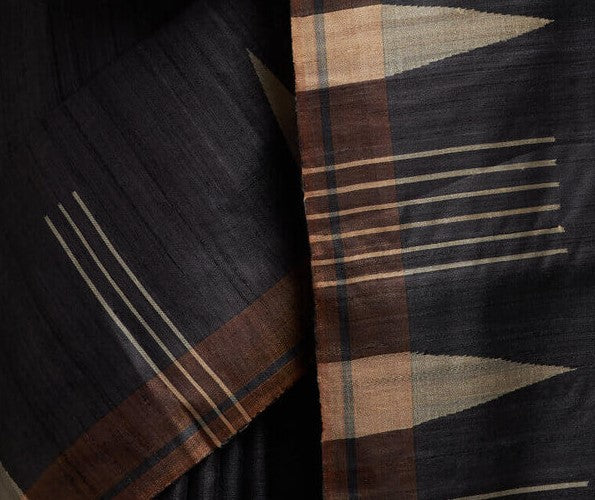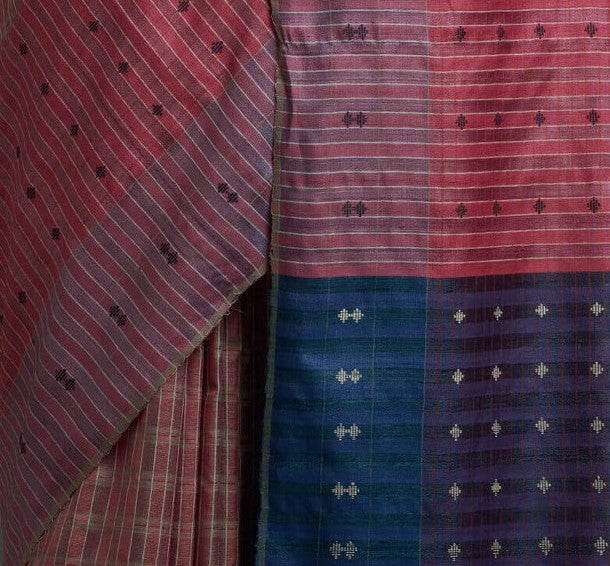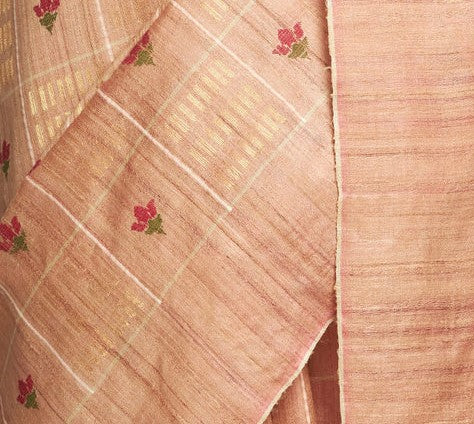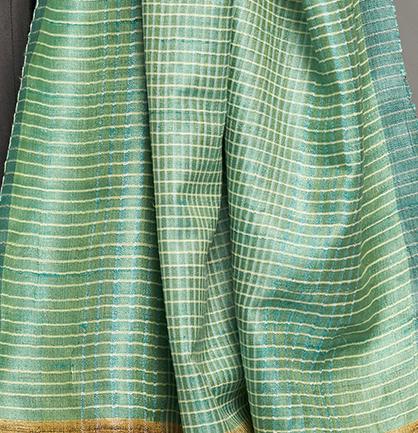Craft and Community
In the quiet villages of Chhattisgarh, the rhythmic clatter of looms weaves a legacy that echoes through time. For centuries, the Dewangan community has been crafting the exquisite Kosa silk—each thread not merely fabric, but a living testament to the stories, struggles, and perseverance of people who have sustained this art through perseverance and ancestral wisdom. According to Hindu legend, the Dewangan community, a scheduled tribe from central and eastern India, traces its origins to the original Dewangan, brought to life by the Goddess Parmeshwari and entrusted with the divine duty of weaving garments for humanity.
Kosa silk, a revered indigenous silk, takes its name from the affectionate term for the Antheraea Mylitta worm, which spins its cocoons among the Arjun, Saja, and Sal trees of Chhattisgarh's forests. This silk is crafted through various meticulous techniques, intimately connected with the women of the region, who employ the unique ‘Thigh Reeling’ technique to spin the yarn—a skill honed and preserved through generations.
The weaving of Kosa silk involves mastering traditional techniques such as ‘Jaala,’ ‘Khapa,’ and ‘Phera.’ These techniques are learned within families, passed down through oral tradition and hands-on practice, with each family member contributing to various stages of production. Thus, Kosa silk is not merely a livelihood but a profound cultural bond, a testament to collective heritage and artistry.

Weaving Techniques of Kosa

Phera
Phera is a three-shuttle weaving technique that interlocks the weft of the body of the fabric with the weft of the borders on both sides. This technique is used to create simple straight borders as well as intricate temple borders on saris. Due to its complexity, it requires two weavers to work together in sync. The term "Phera," which means "turn around," refers to the shuttle turning at the point where the two wefts intersect.


Khapa
Khapa is a weaving technique used to insert extra weft threads to create simple geometric patterns, either in the border, pallu, or motifs across the body of a saree. A flat, smooth wooden tool called a 'Khapa' is inserted into the warp threads according to the desired placement, size, and width of the motif. The Khapa tool is then lifted to raise specific warp threads, allowing the extra weft to be manually woven through, forming the motif as it interlaces with the warp.

Jaala
Jaala is a weaving technique used to create intricate motifs and patterns that are too complex for a standard dobby mechanism. In this method, each warp thread is individually tied to a specific horizontal thread that needs to be lifted simultaneously according to a pre-designed graph. The process requires two artisans: one sits behind the shafts, over the warp, manually lifting the jaala threads with a wooden hook after each pick to match the pattern’s repetition, while the other artisan weaves the fabric. This synchronised effort allows for the creation of elaborate and delicate designs.


Plain Weave
The plain weave is one of the most fundamental and enduring weaving techniques, celebrated for its simplicity, strength, and versatility. In this method, the warp and weft threads are interlaced in a crisscross pattern, creating a balanced and uniform fabric. This structure ensures durability while providing a smooth and clean surface that beautifully showcases the natural texture of the fibers. Known for its lightweight and breathable qualities, plain weave is ideal for creating products that are both functional and elegant.
